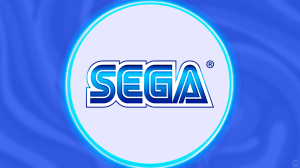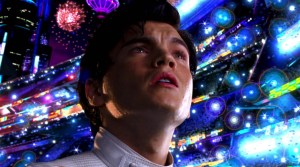Marvel Comics’ X-Men line has been a guiding star in their output since it was reimagined in the dual miniseries House of X and Powers of X, which provided mutants with a sovereign nation, miraculous drugs, and immortality of a sort. Across three subsequent years of comics, those horizons have expanded to include the delivery of a mutant “heaven,” the reclaiming of one million mutants thought lost to history, and the terraforming of Mars into Arrako – capitol of our solar system and new home to the aforementioned mutants. The raw generative energy of this line combined with some of modern comics’ best talents have consistently made the X-Men the most exciting property at the publisher; it cries out to readers that better things are possible.
Videos by ComicBook.com
A.X.E.: Judgment Day sets out to crossover the X-Men, Avengers, and Eternals in an event sending all of Marvel’s most powerful heroes to war with one another. The Eternals under Druig’s new leadership have discovered mutants share ancestry with Deviants who Eternals are tasked with “correcting.” Believing that an outside enemy and conflict will secure his leadership and legacy, Druig decides to eliminate mutants, justifying his actions by pointing to their recent accomplishments. The Avengers are mixed up in all of this as they plot from inside the corpse of a Celestial. Druig largely succeeds in his ambitions in the pages of A.X.E.: Judgment Day #1 when he sends Uranos to Arrako and seemingly purges the planet of nearly all mutant life. This sends a clear message to readers as well: Better things are not possible.

Setting aside the many inane elements of superhero plotting involved with a line wide crossover built on sixty years of continuity, this is a comic centered upon the act of genocide. The signposts in the text are plenty clear as Druig makes a pact with human supremacist group Orchid while wearing a business suit as his choices purge the majority of the mutant population, once again, because of their fundamental identity. It is an ugly and terrible thing, although barely any attention is paid to the act itself in the issue. There are abundant reactions before the final page, but the event occurs off-panel with only one page suggesting the devastation in a background of smoke and ash. The million Arraki mutants, recently presented with a new home and relief from endless war, are purged as a plot point; they receive no dialogue and only their leaders even appear in the background of a single panel. Uranos and the narrative treat them with the same dispassionate approach, like numbers in a calculation to provide a sense of threat.
This is a story played out many times in X-Men comics. House of X #7 detailed past genocidal events, including both Genosha and Decimation, and the one of the franchise’s most fondly remembered events is titled “Mutant Massacre.” This moment reads differently from many comparable prior comics in two ways. In a distinct contrast to the tragic final pages of New X-Men #115, which detail the attack on Genosha, A.X.E.: Judgment Day #1 seeks to avoid the terrible carnage that serves as an inciting event for its story. There is no face or experience to connect with the mass death; familiar heroes’ reactions are prized above any consideration of the event itself. Second, it seems to foreclose new possibilities. Arrako only came into existence roughly one year ago, unlike the status quo disrupted in “E is for Extinction” and House of M.
Regardless of how the moment it reads, it seems to define this event primarily as an X-Men story, moreso than a crossover. The Eternals and Avengers are merely participating in the existential struggle of an entire people seeking survival. Additionally, the outstanding artwork of Valerio Schiti (artist of the last mutant-centered event Inferno) and colors of Marte Gracia (whose vibrant palette graces every notable mutant miniseries since House of X) visually define this as another link in Krakoa’s history.
Schiti and Gracia’s artwork, all thirty glorious pages of it, are a testament as to why I’m disinclined to assume too much about the overall project of A.X.E.: Judgment Day based upon an uninspiring first chapter; it is an event shaped by some of the most insightful and deft creators plying their trade at Marvel Comics today. As this story scours landscapes across the solar system, each setting brings its own unique aesthetic and even characters stuck to the background of this overflowing cast are clearly defined. Readers are never in doubt as to where they are or what they are witnessing amidst overlapping lines of time and plot. Gillen’s recent work on both the X-Men and Eternals lines displays an astute grasp of their thematic threads in addition to his ever-clever weaving of narrative. What’s as impressive is how here he neatly reintroduces so many long-running subplots and character arcs from across more than a dozen series into dialogue that is entertainingly expository at its clunkiest. The craft and pedigree on display reasonably requests the benefit of the doubt in a heavily serialized format.
Yet the launch of another story centered upon mutant genocide is regrettable as it’s presented here.
Perhaps the only expectation that’s clear when closing A.X.E.: Judgment Day #1 is that those involved with this crossover event have set an exceedingly high bar for themselves to reach. The story cannot be divorced from our setting – a world onset by a rising tide of fascism embodied in characters like Druig and Uranos. To establish genocide as a plot point while invoking those parallels demands a high degree of scrutiny and consideration, and this issue offers cause for skepticism beyond that narrative decision. The success or failure of A.X.E.: Judgment Day will not be determined by its introduction; this primarily serves to set the stakes for characters and readers alike.
The issue opens with a narrator informing readers that all they (i.e. humanity) understand is violence; it’s later stated by a precognate that there will always be war. Throughout the issue it’s understood that conflict is inevitable and the story delivers the most horrifying outcomes of war imaginable – one readers will recognize immediately in the world around them. Whether Gillen and his many collaborators have anything of value to say about the wars we never cease fighting has yet to be shown.
Published by Marvel Comics
On July 20, 2022
Written by Kieron Gillen
Art by Valerio Schiti
Colors by Marte Gracia
Letters by Clayton Cowles
Cover by
Mark Brooks and Sabine Rich








